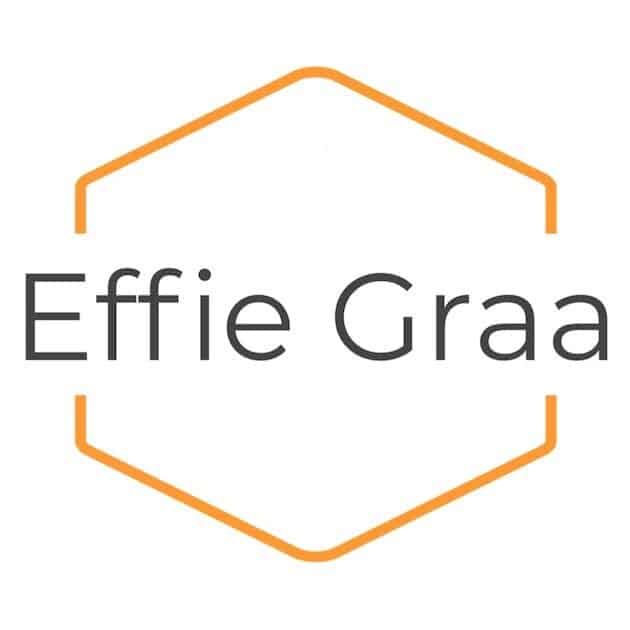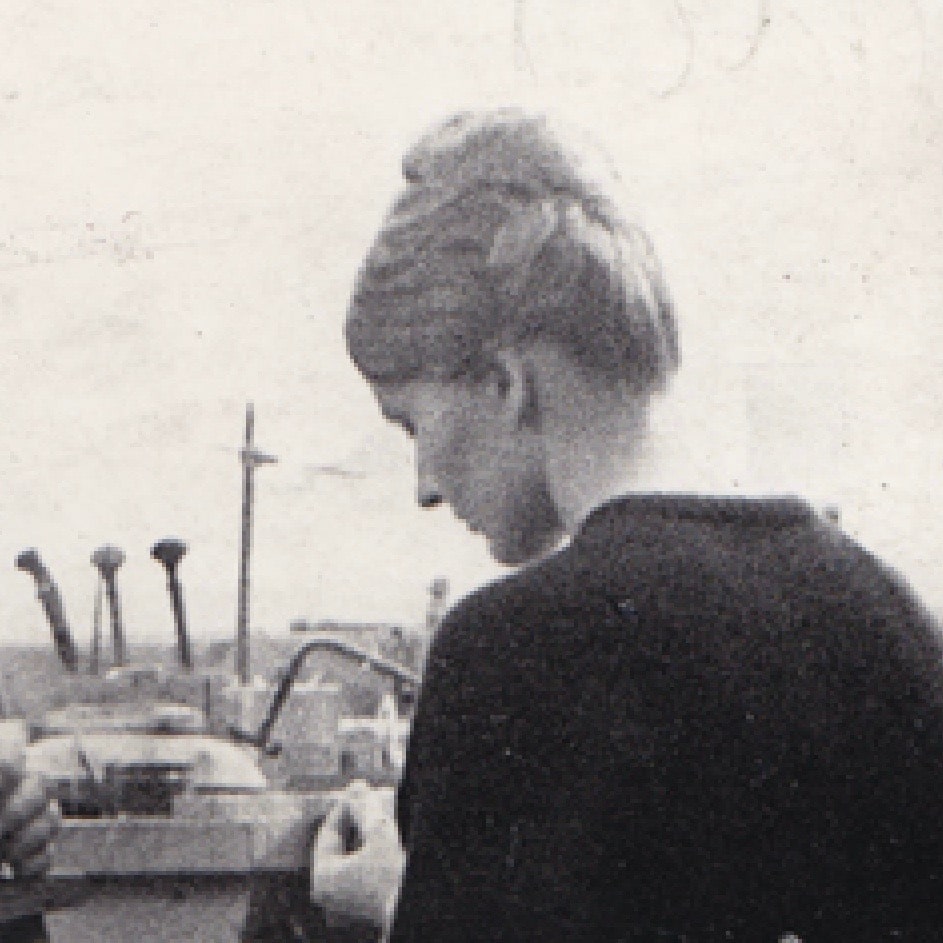
Else Berntsen Hughes in memoriam
1938-2002
(This article was published in 2002 in “Modern Silver Magazine” edited by Marbeth Schon.)
Remembering Else Berntsen Hughes
Else Berntsen Hughes, Norwegian jewelry artist, died earlier this year (2002), 64 years old. This articel is written in memory of her, in celebration of this pioneer of Norwegian Jewelry art, and to present to a broader audience a few of her works.
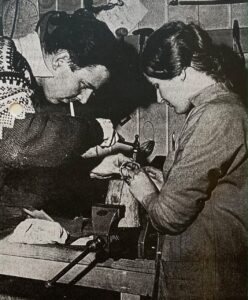
When we first came across a couple of cast sterling brooches marked ‘S Else & Paul’ or simply ‘H’, with their carachteristic amazingly intense expression, we were not able to find out much about them. We had to go back to articles on the Design Triennale exhibitions in Milan of the 1960’s to get to know the artists behind these brooches.
The Hughes
They were Else Berntsen Hughes, born 1938 in Oslo, Norway, and Paul C. Hughes, born 1934 in Leigh-on-Sea, Essex, England. They met in the Central School of Arts and Crafts in London, and in 1959 they established their worksop ‘Studio Else & Paul‘ in Hadeland, near Oslo, thereby becoming early pioneers of the Studio Silver Movement in Norway. The 1960 Triennale in Milan was to be their international break through. Together with the young Tone Vigeland, they were the most noticed of the designers in the Norwegian entry. Their over 20 pieces exhibited featured bracelets and brooches in combinations of sterling silver and gold.
New look
Studio Else & Paul brought a new look to Scandinavian jewelry. While artists such as Tone Vigleand worked in a stricter sence in the tradition of Modern Scandinavian silversmithery, and the David-Andersen companies looked to Old Norse traditions, Else & Paul got their inspiration from the jewelry of other cultures – merging this inspiration with the trend of Scandinavian design.
Creativetity
The driving force of their creativity was the bold richness of their imagination, unconventionally inspired by handicraft and abstract art from so called primitive cultures, and their creations perform a fine balance between free sculpture and worn jewelry. In their own words: ‘The uniqueness of a piece of jewelry ought to be in the shaping of it, every object sholud be a composition with a character of it’s own, also where the amount of precious metal used is at a minimum.’
Asceticism and simplicity
With the Studio Silver movement, the trend in jewelry making became more ascetic, and the expression in a way more simplistic. The value of a piece was not equivalent to the value of the materials used, more was is the artistic expression that gave of it’s value to the jewelry – as had been the case for a long time in the world of paintings and other fields of art.
Use of stones
The Hughes were among the first to lay their main emphasis on stones other than the precious ones, making use of non- or semi-precious stones. The trend at the time went towards using stones found in the artists surroundings and native environment. Again, Else & Paul worked in another direction, using stones found in other cultures, mainly Malachites and Rhodites found in Africa and Eilat stones from Israel. On their more costly pieces, they would in some cases made use of more classic jewlery stones such as Turmalines and Amethysts.
“À cire perdue”, aka “Lost Wax Method”
Not only the look was new, the technice used to produce the jewelry was also new to Norwegian jewelry manufacturers. Else Berntsen Hughes & Paul Hughes worked almost entirely in a technique called ‘à cire perdue’, also known as the ‘lost-wax-method’: They had become familiar with this technique in England. This same technique, although with an entirelly differnet visual expression, was later adapted at the studio of Uni David-Andersen.
The procedure
The piece of jewelry is first modelled in wax. Around this model is cast a mould of plaster. The mould is then heated so that the wax melts and comes out. Liquid silver is poured into the mould while it is rotating. Thereafter the jewelry is given a manual after-treatment for the final finish. Many of their pieces are patinated/oxidized. However, on quite a few they have given the opposite effect. On some of their jewelry in Sterling silver (.925) they have added a finishing layer of pure silver (.999), ensuring that it does not tarnish, but rather retains a whiter, bright surface of shining silver.
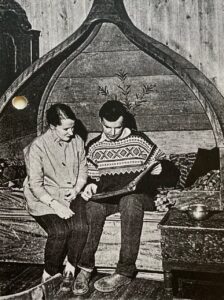
Avant garde
The jewelry of Studio Else and Paul seemed too avant garde for most peolple in their native environment at the time, but it was sold in European and American Scandinavian design stores. Once in a while you can be fortunate enough to find one of their characteristic brooches, pendants or rings on the second hand market or in antique shops. Often they will not be identified, which in our oppinion makes the findi even more exciting.
On her own
When Paul Hughes died in 1981 Else Berntsen Hughes continued for a short while to keep up the work in the jewelry workshop. As things turned out, she more and more came to work in larger scale sculpture, running a privately owned art gallery with her second husband. She was active in the gallery making her important contributuins to the contemporary art scene in Norway until she became too weak from illness and passed away in February of 2002.
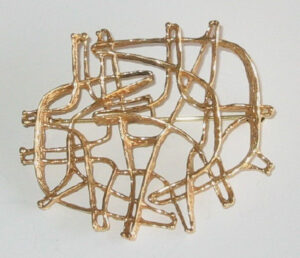
1960s.

Bronze with Eilat stone.

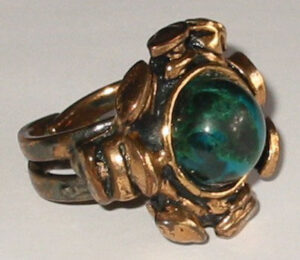
Bronze with Eilat stone.

Table of Contents
Toggle